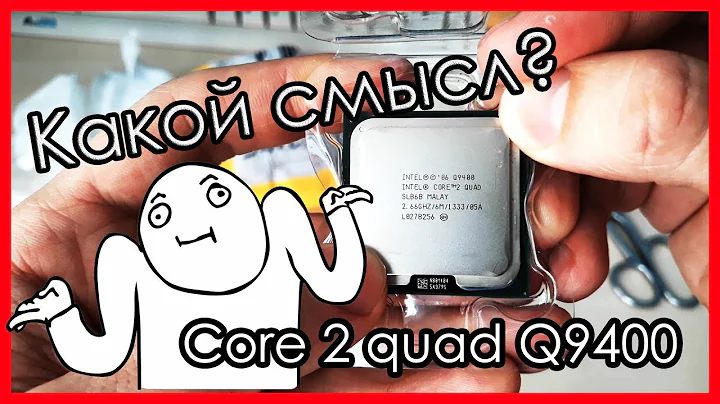The Path to Zero: Intel's Sustainable Semiconductor Manufacturing
Table of Contents
- Introduction
- Intel's Approach to Sustainability
- Sustainable Manufacturing
- Sustainable Products
- Sustainable Solutions
- The Importance of Energy Efficiency
- The Challenges of Sustainability
- The Business Case for Sustainability
- The Role of Net Zero
- Short-Term and Long-Term Sustainability Goals
- Practical Sustainability Measures
- Conclusion
Intel's Approach to Sustainability
In recent years, the topic of sustainability has become increasingly important for companies worldwide. Intel, as a leading player in the semiconductor industry, recognizes the significance of sustainability in its operations. With the goal of developing world-changing technology that improves people's lives, Intel has integrated sustainability into its core values.
Sustainable Manufacturing
Sustainable manufacturing serves as the foundation of Intel's sustainability initiatives. With a focus on minimizing carbon emissions, reducing water usage, and recycling waste, Intel aims to create a more sustainable manufacturing process. Through investments in energy efficiency and waste reduction, Intel has been able to achieve substantial results. By continually improving and innovating in sustainable manufacturing, Intel strives to minimize its environmental impact.
Sustainable Products
Energy efficiency plays a vital role in creating sustainable products. Intel's ambitious goal is to improve the energy efficiency of its products by 10 times over the next decade. By developing more energy-efficient solutions, Intel aims to meet the rising demand for sustainable products in the marketplace. Intel recognizes that customers increasingly prioritize energy efficiency, making it a crucial aspect of their product development strategy.
Sustainable Solutions
Intel aims to extend beyond its own operations and products to help customers build a more sustainable world. By providing sustainable solutions, such as designing and offering green PC options, Intel seeks to empower customers to make environmentally friendly choices. This approach involves collaborating with customers to develop innovative solutions that contribute to a greener future.
The Importance of Energy Efficiency
In the era of Generative AI and technological advancements, Intel recognizes the significance of energy efficiency. As the industry relies heavily on compute horsepower and data centers, energy consumption becomes a critical factor. Intel strives to achieve a balance between energy efficiency and performance, focusing on reducing power usage while enhancing functionality. By investing in energy-saving measures, Intel aims to reduce its environmental footprint while meeting the growing demand for technology.
The Challenges of Sustainability
While sustainability is a priority for Intel, it does come with its share of challenges. Intel acknowledges that achieving sustainability goals involves complex tasks and continuous efforts. As Intel focuses on reaching its emission reduction targets, it faces various obstacles. For example, transitioning to alternative chemistries in semiconductor production to minimize greenhouse gas emissions requires extensive research and development. Additionally, finding renewable electricity sources and reducing dependence on natural gas Present significant challenges. Intel actively participates in collaborations and initiatives to address these challenges collectively.
The Business Case for Sustainability
Sustainability is not only about environmental responsibility but also a smart business strategy. Intel recognizes that sustainability initiatives contribute to the bottom line, rather than detracting from it. Investments in energy efficiency, waste reduction, and sustainable manufacturing practices offer substantial paybacks. By reducing costs, improving resource management, and meeting customer demands for ecological solutions, Intel ensures that sustainability positively impacts the business.
The Role of Net Zero
The concept of Net Zero emissions has gained significant traction in the sustainability dialogue. Intel is committed to achieving Net Zero emissions across its operations by 2040. This involves reducing emissions associated with manufacturing processes and electricity usage as much as possible. Intel also recognizes the importance of addressing scope three emissions, which include the indirect emissions associated with its supply chain. Collaborative efforts within the semiconductor industry, such as the Semiconductor Climate Consortium, aim to establish reporting standards and guide the industry toward Net Zero emissions.
Short-Term and Long-Term Sustainability Goals
While Intel sets long-term sustainability goals, it recognizes the need for short-term milestones as well. Regular targets and objectives, such as annual and quarterly metrics, ensure progress and accountability. Intel employs the Objectives and Key Results (OKRs) framework, which provides a method to track and measure sustainability performance. By tying employee bonuses to sustainability outcomes, Intel reinforces the company-wide commitment to sustainability.
Practical Sustainability Measures
Practical sustainability measures are crucial for success. Intel understands the necessity of immediate action and visible results. By investing in renewable electricity, conserving water, and reducing waste, Intel demonstrates its commitment to sustainability on a practical level. The company prioritizes transparency and accountability through regular reporting and tracking progress toward its sustainability goals.
Conclusion
As a global leader in the semiconductor industry, Intel is at the forefront of sustainability efforts. By integrating sustainability into its manufacturing processes, products, and solutions, Intel strives to reduce its environmental impact. The company recognizes that sustainability is not only a responsible choice but also a sound business strategy. Through ongoing initiatives, Intel is committed to achieving its long-term sustainability goals while implementing practical measures to make a positive impact in the short-term. With a focus on innovation and collaboration, Intel remains dedicated to building a more sustainable future.
Highlights
- Intel's approach to sustainability encompasses sustainable manufacturing, products, and solutions.
- Energy efficiency plays a vital role in creating sustainable products, and Intel aims to improve its products' energy efficiency by 10 times over the next decade.
- Intel sees sustainability as good business, with investments in sustainability measures generating significant returns.
- Intel is committed to achieving Net Zero emissions across its operations by 2040 and actively participates in industry collaborations to reach this goal.
- Short-term and long-term sustainability goals are equally important, and Intel utilizes the Objectives and Key Results framework to ensure progress and accountability.
- Practical sustainability measures, such as investing in renewable electricity and reducing waste, are vital for immediate impact and visible results.
FAQ
Q: What is Intel's approach to sustainability?
A: Intel's approach to sustainability revolves around sustainable manufacturing, sustainable products, and sustainable solutions. The company aims to minimize its environmental impact by reducing carbon emissions, conserving water, and recycling waste. With a focus on energy efficiency, Intel develops products that prioritize sustainability and seeks to help its customers make greener choices through innovative solutions.
Q: What are Intel's goals regarding energy efficiency in its products?
A: Intel aims to improve the energy efficiency of its products by 10 times over the next decade. By prioritizing energy efficiency, Intel meets customer demands for sustainable solutions while reducing the overall environmental footprint of its products. Energy efficiency plays a crucial role in minimizing resource usage and achieving long-term sustainability goals.
Q: How does Intel address the challenges of sustainability?
A: Intel acknowledges the challenges associated with sustainability, particularly in sectors like semiconductor manufacturing. Transitioning to alternative chemistries, finding renewable electricity sources, and reducing dependence on natural gas are among the obstacles Intel faces. To address these challenges, Intel actively participates in collaborations and consortia to drive industry-wide progress.
Q: How does Intel measure progress towards its sustainability goals?
A: Intel utilizes the Objectives and Key Results (OKRs) framework to track and measure progress. The company sets quarterly and annual objectives and key results related to sustainability. By tying employee bonuses to sustainability performance, Intel emphasizes the importance of achieving these goals and ensures ongoing accountability.
Q: What is Intel's commitment to Net Zero emissions?
A: Intel is committed to achieving Net Zero emissions across its operations by 2040. This involves reducing emissions associated with manufacturing processes and electricity usage as much as possible. Additionally, Intel recognizes the significance of addressing scope three emissions, which include indirect emissions from the supply chain. Intel actively contributes to industry-wide initiatives aimed at establishing reporting standards and guiding the semiconductor industry towards Net Zero emissions.
 WHY YOU SHOULD CHOOSE TOOLIFY
WHY YOU SHOULD CHOOSE TOOLIFY


































